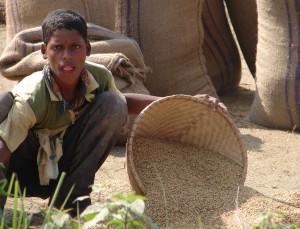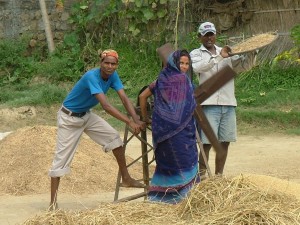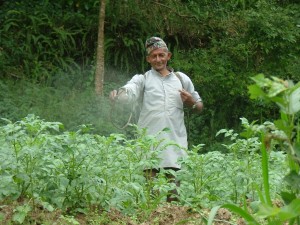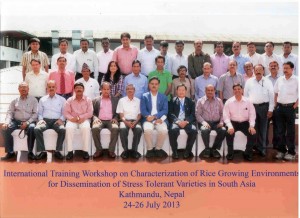What’s best for Nepal’s farmers: hybrid seeds – by and large imported from abroad – or original, local varieties? Well, opinions differ. But voices critical of hybrid seeds are growing. Hybrid corn, rice and other crops have been grown in Nepal for over a decade – and USAID is promoting hybrid seeds as the best way ahead. However, steadily more farmers are now raising concerns.
USAID says that unless farmers start to grow hybrid crops on a larger scale, Nepal will never become self-sufficient with grains and other farm products. Hybrid seeds – which are developed chiefly by large, foreign corporations – give much higher yields than the country’s local, naturally grown seeds. So the choice, the American donor argues, is an easy one. But farmers have started to say that there is a catch.
Hybrid seeds can produce much higher yields per hectare than original seeds ever did. There is no question about that: test sites have shown yields twice as high or more. But hybrid seeds can also fail miserably – and when they do, the situation of the farmers can turn into a disaster often greater than it is with original, local seeds.
Hybrids produce no seeds for re-sowing. So farmers have to buy fresh hybrid seeds every year. But if the harvest fails, and farmers don’t make any income, they can’t afford fresh seeds at all. Moreover, many farmers who shifted to hybrids no longer have local seeds in stock. So, they are left without seeds to fall back on!
Last fall, farmers out in Kavre made protest in exactly that situation. They had the worst rice harvest ever as a result of growing hybrid. In Rasuwa, farmers made poor yields too with hybrid maize. The harvest was good the first year but then failed the next. Many farmers had to go and borrow money to afford new seeds.
The “catch” in growing hybrid, however, goes deeper than that. Local seeds have the genetic built to grow under local conditions. Hybrids, on the other hand, typically need extra care with modern inputs. To overcome insects and other pests, they need to be sprayed frequently; and to yield, they need a lot of chemical fertilizer.
Pesticides and chemical fertilizer are part of the hybrid “deal”. But farmers are seeing serious side-effects. Pesticides are not only killing bugs but also beneficial insects and micro-organisms. Making matters worse, chemical fertilizer lowers soil quality over time; farmers then apply even more fertilizer and soil quality plummets further.
Hybrid seeds have attracted many farmers due to high yields – but at a great cost. Seeds not only have to be purchased, along with pesticides and fertilizer. In addition, local seed varieties are disappearing because still fewer farmers are sowing them. One farmer says:
“Our local seeds are about to disappear. If for some reason these hybrid seeds do not come, we would be in a situation of emergency.”
The hybrid catch: farmers in Panchkhal.
Why, then, grow hybrids at all? Well, USAID insists – amidst the concerns – that hybrid seeds are the road ahead. Trainings and further seed development, the American donor argues, will solve the issues. Along these lines, USAID recently announced a plan to train another 20,000 farmers, pushing further ahead in its effort to make hybrid seeds spread on Nepalese soil.
However, steadily more farmers are having regrets. Watch our video opposite to hear farmers in Panchkhal – a commercial farm area outside Kathmandu – tell about the shift from local to hybrid seeds. It’s a six-minute video about a chillingly fragile situation which many farmers growing hybrids face today.








1 comment
Just found this article on hybrid seeds in developing countries – just to mention one fact stated in the article: as a result of marketing of hybrid seeds, the world lost around 75 percent og its food bio-diversity. Here’s more: http://www.smallfootprintfamily.com/hybrid-seeds-vs-gmos